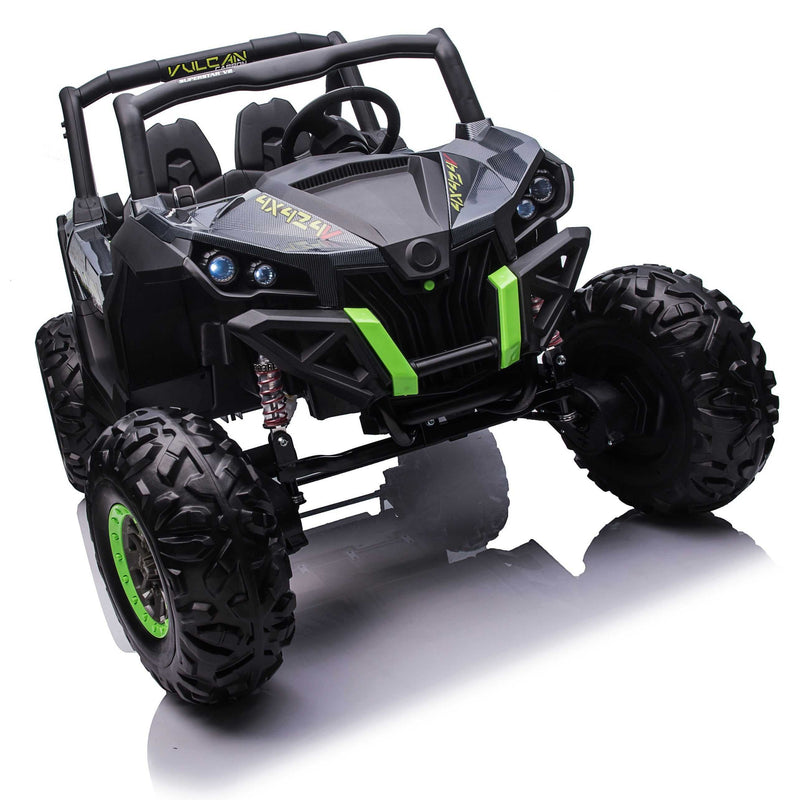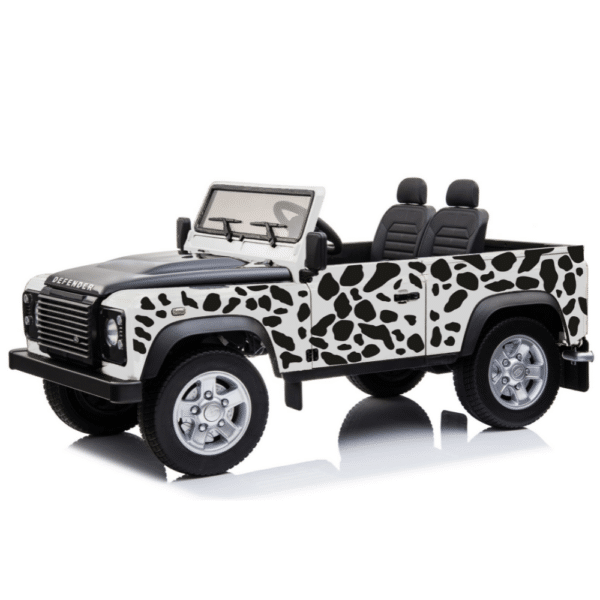Excellent Ideas On Selecting Kids Cars
Wiki Article
How Should You Choose A Ride-On Vehicle For A Toddler Or An Older Child?
Be aware of the following aspects when you are buying a ride-on automobile for your child: age development stage, size. These are all important to ensure that the ride-on is suitable and safe for your child. Consider these factors:
These cars are designed to be used by toddlers. These cars feature a low and sturdy design, easy controls, as well as features like buttons and steering wheels, or levers. Ride-on vehicles with a wide base will provide stability and lower the possibility of them falling off.
Children over 3 years old At the age of 3, children are able to handle ride-ons with more advanced functions and control. Think about cars that have adjustable seats as well as larger weight capacities. Also consider features that are interactive like working lights, sounds and music. Consider ride-on vehicles that have adjustable speed or parental controls for different skill levels.
Size
Height and weight - When selecting the right ride-on you should consider your child's size and weight. Pick a car with a an appropriate weight and height capacity that is comfortable for your child. Avoid cars too big or small. They can be uncomfortable and unsafe.
Comfort and Legroom - Ensure your child has enough room to be seated comfortably in the car. Make sure you check the car's dimensions and ensure it's suitable for your child.
The Developmental Stage
Motor Skills - Think about your child's motor skills and coordination abilities when choosing the right ride-on vehicle. For toddlers, simpler controls may be needed to steer. But, older kids are able to use interactive features and more intricate controls.
Independence and Confidence. Ride-on car can help to build independence and confidence as kids learn how to steer and control the car. Select a car that will enable your child to master the ability to steer, accelerate, and brake on their own. This will build their motor skills and confidence as they progress.
When you are choosing a ride-on automobile, consider your child's preferences and interests. Choose a car that is themed, has colors, or has features that your child will appreciate, whether it be an old-fashioned car. a sportscar, a truck, a cartoon character and so on.
If you take into consideration the age, size, and developmental stage You can select the right ride-on vehicle that is safe as well as comfortable and enjoyable, providing hours of fun and learning for your child while they explore and play. Check out the top remote control childrens cars for site advice including kids electric cars, childrens digger, car toy car toy, car electric ride on, ride on digger, electric ride on, race car toy, childs car toy, remote control childrens electric cars, car on ride and more. .

What Can Children's Car Models Be Used Both Indoors And Out?
Outdoors or indoors, children automobiles are designed to be used in different conditions and settings. This is how the designs differ - Indoor Use Cars Indoor Use Cars
Size and weight Cars made for indoor use are typically lighter and less bulky to be maneuvered easily in small spaces like living rooms, playrooms or hallways. They can navigate through tight spaces and narrow passageways with ease.
Low Ground Clearance Cars for indoor use have a lower ground clearance, which means they won't be snagged or stuck by obstacles like rugs, thresholds or carpets. This allows for smooth, free motion on indoor surfaces.
Smooth Wheels The wheels of indoor-use automobiles are typically composed of smooth materials such as plastic or rubber to provide traction and grip on smooth surfaces like hardwood floors, laminate flooring, or tile. They are engineered to reduce the sound and avoid scratching or scratching indoor surfaces.
Limited Speed - Indoor usage cars usually have lower maximum speeds to make sure that they are safe and secure within tight areas. This can prevent accidents and collisions caused by furniture, such as walls or obstructions found inside.
Outdoor Use Cars -
Durable Construction: Cars designed for outdoor use have strong materials like hard plastic or steel that are able to withstand harsh handling, outdoor elements like moisture and sun. These cars are built to withstand the extreme conditions that are typical of outdoor use.
Increased Ground Clearance: Outdoor-use vehicles are equipped with a greater level of ground clearance that allows them to traverse uneven terrain or bumps encountered in the outdoors. This enables them to navigate rough surfaces such as dirt, grass or gravel without becoming stuck or causing damage.
Traction Tires: The tires on cars used for outdoor use typically have treads, or patterns that enhance grip and traction when driving over uneven or slippery surfaces. This provides stability and control when driving on rough terrain and prevents sliding or skidding.
Weather Resistant Components - Vehicles intended for outdoor use might have weather-resistant parts like electronic components that are sealed with waterproof casings, or rust resistant materials. These elements shield the vehicle from water and environmental harm. This allows the car to stand up to water, puddles or mud and still perform well.
Outdoor-use cars have higher maximum speed to accommodate vast areas and distances. This could provide an thrilling and exciting riding experience for children that are out in the open.
In considering these design characteristics and other features, parents are able to pick a child's vehicle that is best suited to their specific requirements for use and the surroundings in which they will utilize it, whether indoors or out. Parents can ensure that your child is safe enjoyable, memorable, and long-lasting experience. Check out the recommended find out more on kids ride on cars for more examples including ride on car, pedal car, childrens ride on, pedal car, toy with car, toy cars, kiddies cars, toy car for car, kiddies cars, childs car toy and more. .

What Should I Consider Before Buying An Electric Kids Car? Pros And Pros?
There are a variety of factors to consider before buying an electric car for your child. Here are some suggestions to consider, as well as information about the size cost, prices, pros or pros and.
When choosing an electric car to your child, consider the size and age of your child. For children who are smaller or younger small and lightweight models are often the best choice. However, older and bigger children might require vehicles with more room to accommodate them.
Car Size and Weight
The electric models for children's cars come in different sizes. From small-scale to larger-scale replicas, they're available. Take into consideration the weight and size of the car in relation to your child's size, age, and strength, as well as the available space for storage and playing.
Price Band Price Range
The cost of electric vehicles for kids can vary according to a myriad of factors including the size, model and the quality. Prices of micro-sized models range from $50 to 200 in comparison to larger-scale replicas can range from $600 to $800.
What are the pros and cons?
Pros -
Children's electric cars offer endless hours of fun, imaginative play, and the chance to drive their own vehicle.
Motor Skill Development: Driving an electric vehicle can help develop fine motor and spatial awareness abilities in children.
Electric cars promote outdoor play, physical exercise and exploration.
Realistic Features - A lot of electric children's cars have real-life features, such as functioning headlights, horn sounds, as well as MP3 player compatibility, which enhances the experience of playing.
Cons
Costs - Top-quality electronic kids cars aren't cheap, especially licensed replicas of the most popular brands in cars.
Battery Life - Electric cars depend on rechargeable batteries to provide power. These batteries may have limited run times and require frequent recharge.
Safety Risks - Electric vehicles may pose safety concerns such as falls, collisions and entrapment if not handled with caution and with the supervision of an adult.
Assembly and Maintenance - Certain electric vehicles require assembly upon arrival and regular maintenance which includes cleaning, battery care as well as occasional repairs or replacements.
Accessories and features -
Think about the features that come with the electric kids car. These include working headlights and horns, remote parental controls, seat belts and storage compartments. Pick a model that has features that match your child's interests and preferences.
The ideal electric vehicle for your child will depend upon factors like their age and size, as well as their interests and budget. Make sure you look into and compare different models, read reviews, and think about the pros and cons prior to making a decision. View the best JCB ride on digger kidscars.co.uk info for website advice including remote control childrens car, toy car for car, toy car, electric ride on cars, toy with car, ride of car, cars pedal car, ride on car, electric ride on cars, childrens ride on and more. .
